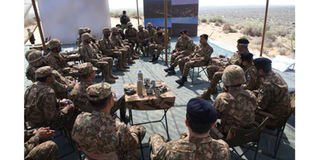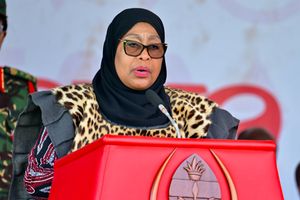Pakistan prioritises defense spending over civilian growth and stability

The Economic Survey 2024–25, presented by Finance Minister Muhammad Aurangzeb, reveals a veneer of stark reality regarding deep structural dysfunction, underwhelming growth, and a state apparatus prioritising military expenditure over economic and human development in Pakistan.
More importantly, after losing the recent military conflict with India, the Pakistan military had an excuse to import new defense equipment. As expected, China is wooing Pakistan to purchase its expensive modern weapons, including advanced fighter aircraft and air defense systems.
The performance of Chinese weapons in the recent conflict humiliated Pakistan. However, the strong Chinese defense lobby in Pakistan will compel new military purchases, leading to a significant increase in defense spending and jeopardizing the minimal chances of relief for the people of Pakistan.
Despite a bleak economic outlook, the government of Pakistan continues to conceal the real data and mislead foreign investors with inaccurate projections.
Last year, Pakistan attempted to promote a positive image of its declining economy after the International Monetary Fund (IMF) approved a new bailout of $7 billion. Islamabad aimed for its GDP to grow by 3.6 percent, which never materialized as the growth remained at 2.68 percent.
This reflects not recovery, but stagnation. For a country with one of the world’s youngest and fastest-growing populations, this level of growth is inadequate to accommodate new entrants into the labor market, let alone reduce poverty or improve living standards.
Additionally, the recent military conflict with India has cost Pakistan over $11 billion, representing a significant financial loss for an economy reliant on IMF loans for survival.
Reports indicate that the IMF is worried Pakistan will be unable to meet the loan’s conditions and may divert funding toward defense purchases from China.
According to the economic survey, the agriculture sector, which employs over 35 percent of Pakistan’s labor force, grew by a mere 0.56 percent last year, struggling with a 13.5 percent decline in primary crop production, including a 31 percent drop in cotton, a 9 percent decrease in wheat, and a 15 percent reduction in maize, due to water shortages, mismanaged inputs, corruption, and climate change.
This represents the worst agricultural performance in modern Pakistani history, outpacing years of significant flooding.
Yet, despite its crucial role in ensuring food security, agrarian reform remains absent from the policy priorities of the federal government in Pakistan.
Meanwhile, large-scale manufacturing, essential for export growth and job creation, contracted by 1.5 percent, revealing the decline of Pakistan’s industrial base.
The services sector saw little growth at 2.91 percent, which is skewed towards urban centers and fails to uplift large segments of the population. Energy costs and import restrictions have impacted the manufacturing industry in Pakistan.
The government’s protectionist policies, widespread corruption, and the growing involvement of the military establishment are suppressing competitiveness. Without reforms, tax equity, and an export-driven strategy, Pakistan risks entering another cycle of shallow recovery followed by sharp decline.
Furthermore, Pakistan has touted a drop in inflation to 4.7 percent (from 25 percent the previous year) as a policy success.
It fetched some international media headlines and an excuse to receive more foreign loans, but this masks a deeper cost of stabilization: a heavy dose of IMF-prescribed austerity.
As a result, development spending has been sharply curtailed, and essential subsidies for food, fuel, and electricity have been slashed.
The decline in real wages and rising utility bills are contributing to growing distress in urban and rural households alike.
More importantly, the primary fiscal surplus of 3 percent of GDP was achieved not through structural reforms or enhanced tax capacity, but by cutting civilian development expenditure and increasing reliance on regressive indirect taxation, including petroleum levies.
This has widened inequality and reduced the Pakistani state’s capacity to invest in health, education, and climate adaptation.
While public development spending has been cut to satisfy IMF conditions, Pakistan’s defense budget is reportedly slated to rise again, even though the country is in economic emergency.
Reports indicate a proposed double-digit increase in defense spending, exceeding PKR 2 trillion, or nearly 16 percent of total government expenditure.
This occurs at a time when public education funding falls below 2 percent of GDP, and health care spending is under 1.5 percent of GDP, significantly lower than regional standards.
Over 40 percent of children under five suffer from chronic malnutrition (stunting), and more than 20 million children are still out of school in Pakistan.
The militarization of the budget reflects the structural dominance of the Pakistan Army in the country’s political economy, where national security is framed primarily in military terms rather than in terms of human security.
Even during the worst phase of inflation, defense allocations in Pakistan remained unaffected, while the public faced wage freezes and food insecurity.




